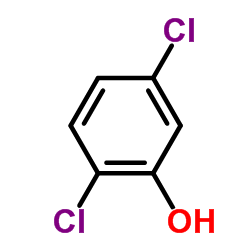Stability of the conjugated species of environmental phenols and parabens in human serum
Xiaoyun Ye, Lee-Yang Wong, Lily T. Jia, Larry L. Needham, Antonia M. Calafat, Xiaoyun Ye, Lee-Yang Wong, Lily T. Jia, Larry L. Needham, Antonia M. Calafat
文献索引:Environ. Int. 35(8) , 1160-3, (2009)
全文:HTML全文
摘要
In humans, the metabolism of environmental phenols may include the formation of conjugated species (e.g., glucuronides and sulfates), but the free species—not the conjugated forms—are considered biologically active. Therefore, information on the concentration of these free species in blood or urine could be helpful for risk assessment. Because conjugates could hydrolyze to their corresponding free forms during collection, handling, and storage of biological specimens, information on the temporal stability of the conjugates is of interest. Previously, we reported the temporal stability of urinary conjugates of several environmental phenols, but data on the stability of phenols' conjugated species in serum, albeit critical if concentrations of free and conjugated species are compared, are largely unknown. In the present study, we investigate the stability of the conjugates of four phenols—bisphenol A, benzophenone-3, triclosan, and 2,5-dichlorophenol—and two parabens—methyl paraben and propyl paraben—in 16 human serum samples for 30 days at above-freezing temperature storage conditions (4 °C, room temperature, and 37 °C). These conditions reflect the worst-case scenarios that could occur during the short-term storage of biological samples before their long-term storage at controlled subfreezing temperatures. We found that the percentage of the conjugated species of the four detected compounds (2,5-dichlorophenol, triclosan, and methyl and propyl parabens) in these serum specimens even when stored at 37 °C for at least 30 days did not vary significantly. These preliminary data suggest that the phenols' serum conjugates appear to be more stable than their corresponding urinary conjugates, some of which started to hydrolyze within 24 h under similar storage conditions. The reported stability of these conjugated species in human serum also suggests that the free species are unlikely to have resulted from the hydrolysis of their corresponding conjugates. This information could be important for interpreting the low concentrations of free phenol species detected in serum samples of nonoccupationally exposed populations. To our knowledge, this is the first study to report on the stability of conjugated species in serum, and as such requires replication.
相关化合物
| 结构式 | 名称/CAS号 | 分子式 | 全部文献 |
|---|---|---|---|
 |
2,5-二氯苯酚
CAS:583-78-8 |
C6H4Cl2O |
|
The lin genes for γ-hexachlorocyclohexane degradation in Sph...
2011-01-01 [Biosci. Biotechnol. Biochem. 75(3) , 466-72, (2011)] |
|
A fatal case of mothball intoxication presenting with refrac...
2012-03-01 [Arch. Dermatol. 148(3) , 404-5, (2012)] |
|
Urinary concentrations of phthalates and phenols in a popula...
2011-07-01 [Environ. Int. 37(5) , 858-66, (2011)] |
|
Levels of metals and organic substances in workers at a haza...
2009-03-01 [Int. Arch. Occup. Environ. Health 82(4) , 519-28, (2009)] |
|
The kinetics of O-hexyl O-2,5-dichlorophenyl phosphoramidate...
1993-06-01 [Chem. Biol. Interact. 87(1-3) , 117-25, (1993)] |